I Finally Got To Try Out Gogo 2Ku and Was Suprised To Learn Just How Fast The Satellite In-Flight Wi-Fi Truly Is
Last week, I ventured down to Punta Cana, Dominican Republic to visit the VIP Lounge Punta Cana; a unique airport lounge featuring an outdoor swimming pool. I’m based out of St. Louis, Missouri which means most of my travels involve a connection or two. To get to Punta Cana, I first flew to Philadelphia and then onto my final destination. Though my first flight was uneventful and featured Gogo’s basic Air-To-Ground (ATG) in-flight wi-fi, I was pleasantly surprised when I learned that my aircraft to Punta Cana was N102UW, an Airbus a320. However, this particular Airbus a320 is one of just a few aircraft in American Airlines’ fleet to feature Gogo 2Ku, Gogo’s new game-changing satellite in-flight wi-fi service.
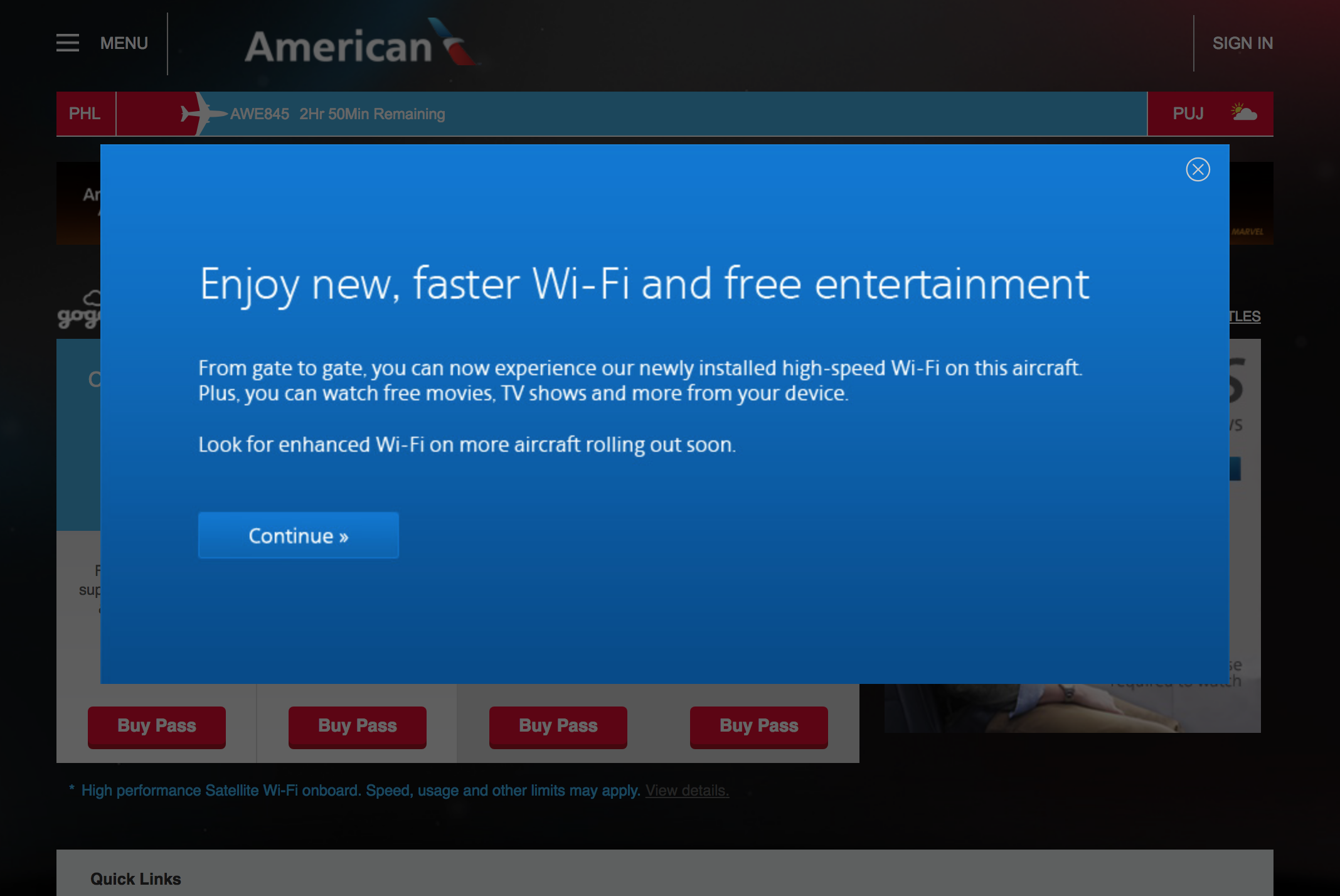
Gogo 2Ku and Gogo ATG, A Very Brief Overview
The terms 2Ku and ATG probably don’t mean much to the average traveler but will have a significant impact on the future of the passenger experience. Both 2Ku and ATG are in-flight wi-fi services offered by Gogo, one of the top providers of in-flight wi-fi solutions.
ATG stands for Air-To-Ground. Air-To-Ground in-flight wi-fi works exactly how the name suggests it would. In an Air-To-Ground wi-fi system, cell phone tower send and receive data from an antenna on ATG equipped aircraft. ATG works well in North America and most of Europe given the widespread coverage of cell phone towers. However, this initially limited what in-flight wi-fi was able to do for passengers. Now, as customers demand more from in-flight wi-fi including the ability to stream their own content, ATG is starting to become outdated.

That’s where Gogo 2Ku comes into play. 2Ku is Gogo’s newest and most advanced in-flight wi-fi system to date. Instead of relying on a connection with sources on the ground, 2Ku uses a network of low-orbiting satellites to send and receive data. Wi-fi antennas on aircraft equipped are found on the top of the aircraft instead of on the bottom in the case of ATG for obvious reasons. The antenna placement isn’t the only difference between 2Ku and ATG. 2Ku’s satellite-based connection allows for more reliable and much faster wi-fi speeds. ATG provides far less bandwidth to users compared to 2Ku. ATG also relied on the availability of towers on the ground. 2Ku covers much of the planet. More bandwidth, faster speeds, and more reliable connections are why satellite wi-fi systems are proving to be the preferred in-flight wi-fi system of major air carriers.
Gogo 2Ku on American Airlines
Unfortunately, due to the high-utilization of aircraft in the airline industry and high-cost of replacing ATG wi-fi systems, Gogo 2Ku’s roll-out has been slow not just for American Airlines but other customers. Still, airlines and wi-fi providers are doing their best to install new satellite wi-fi based systems. American Airlines introduced their first 2Ku equipped aircraft last July. The first aircraft to receive 2Ku was N102UW, an ex-US Airways Airbus a320. This aircraft just so happened to be the first aircraft I’ve flown on with the service.
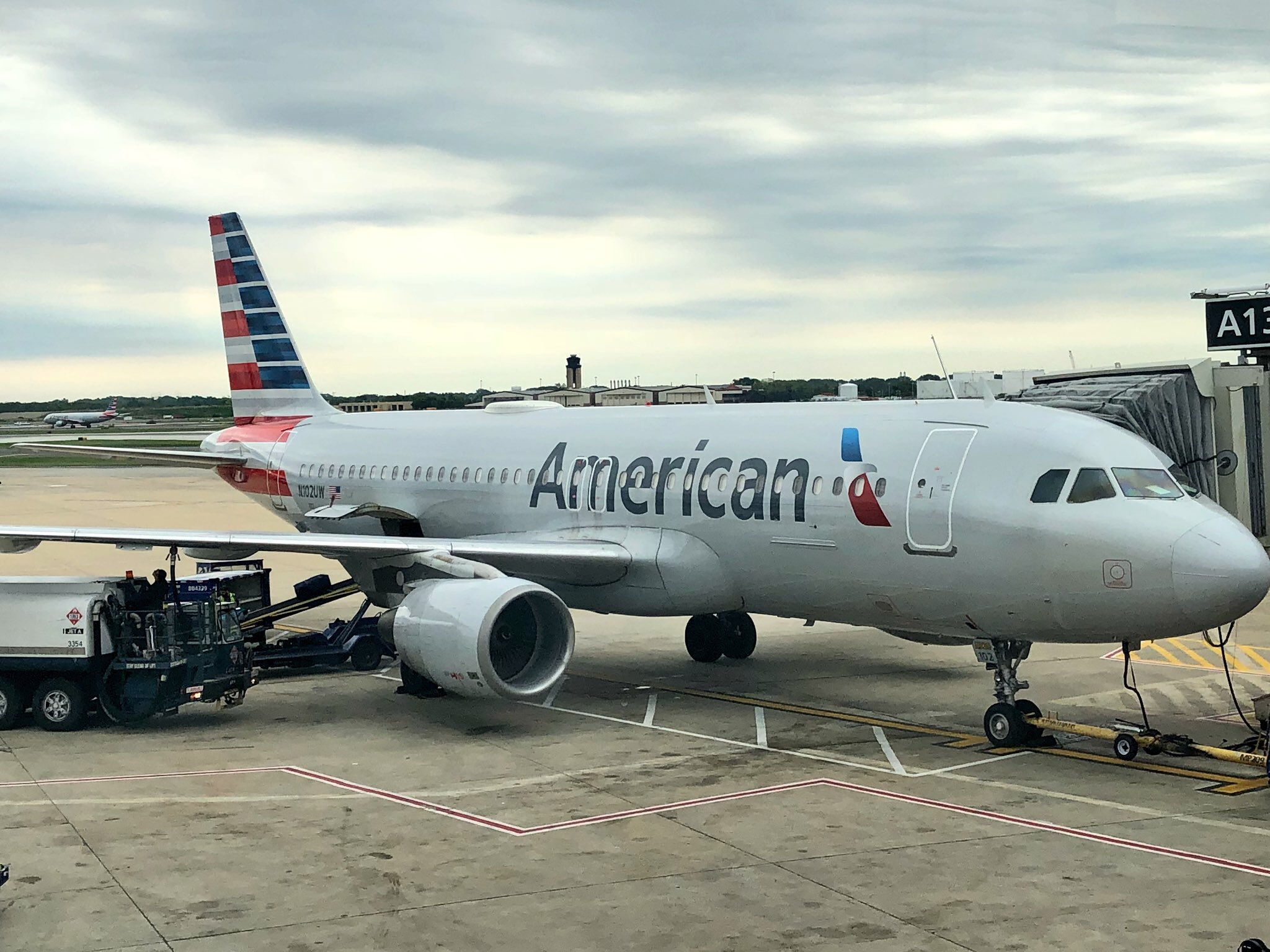
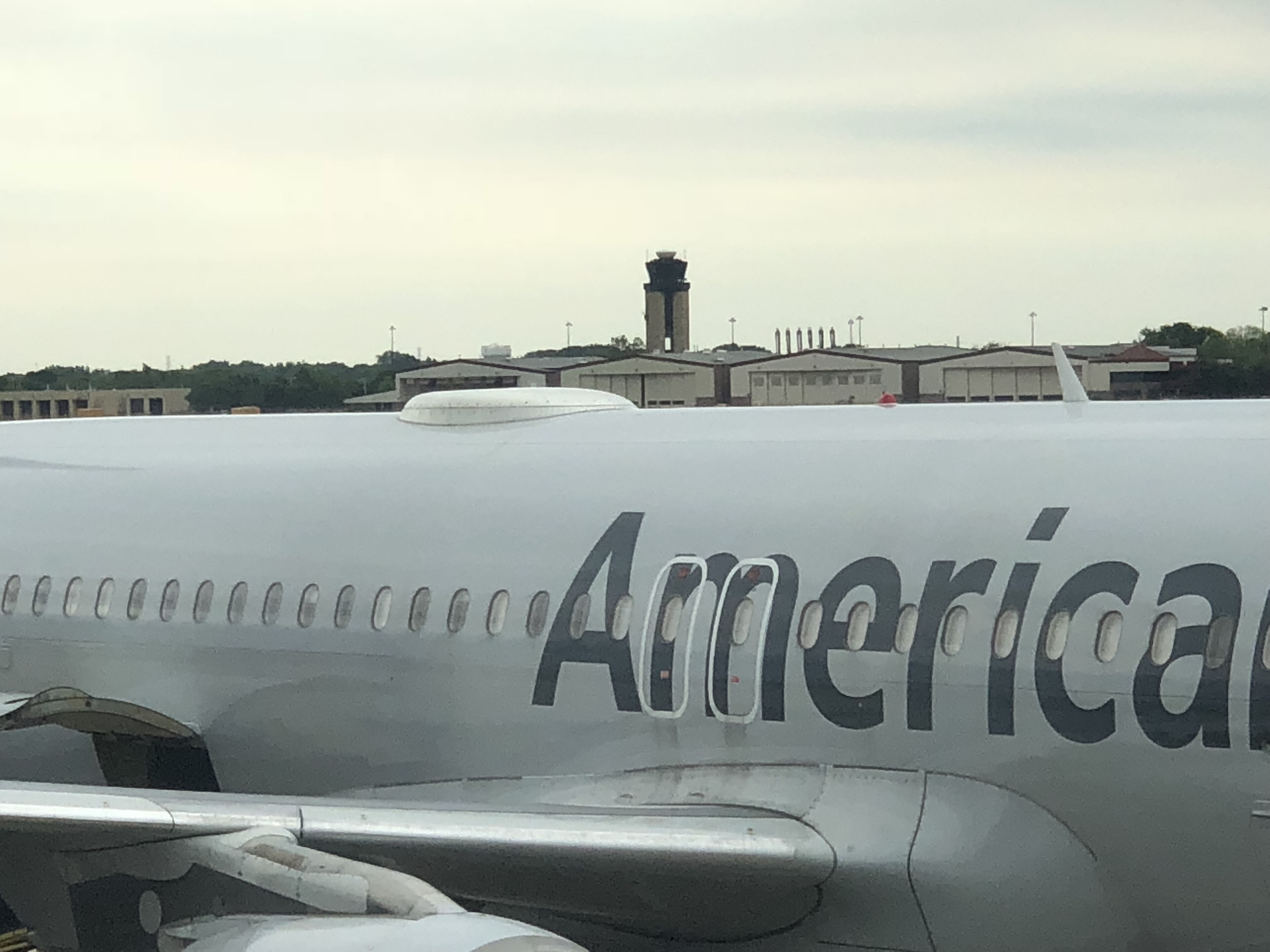
Nearly a year later and the majority of American Airlines’ fleet of Airbus a320s features Gogo 2Ku. Additionally, 27 of American’s Airbus a319s and 1 of the airline’s Boeing 757s feature 2Ku while there are over 50 other aircraft featuring another satellite wi-fi service. Though progress is being made, there are still quite a few aircraft without the next generation of satellite-based in-flight wi-fi. (Source: AA Fleet Site)
While satellite-based wi-fi sounds great on paper, I had been eagerly awaiting the opportunity to try out the service for myself. Finally, the time had come on my American Airlines flight from Philadelphia to Punta Cana. Here’s how Gogo 2Ku performed on the nearly 3.5-hour flight.
Trying Out Gogo 2Ku from Philadelphia to Punta Cana
N102UW is a 19-year old Airbus a320-200 originally delivered to US Airways. After American Airlines and US Airways merged, this aircraft continued to fly for American. Initial reports were that the Airbus a320 would be retired. However, this appears that this is no longer the case. Nearly every aircraft is now equipped with next-generation in-flight wi-fi and received interior overhauls. One thing these aircraft did not receive were in-seat power outlets.
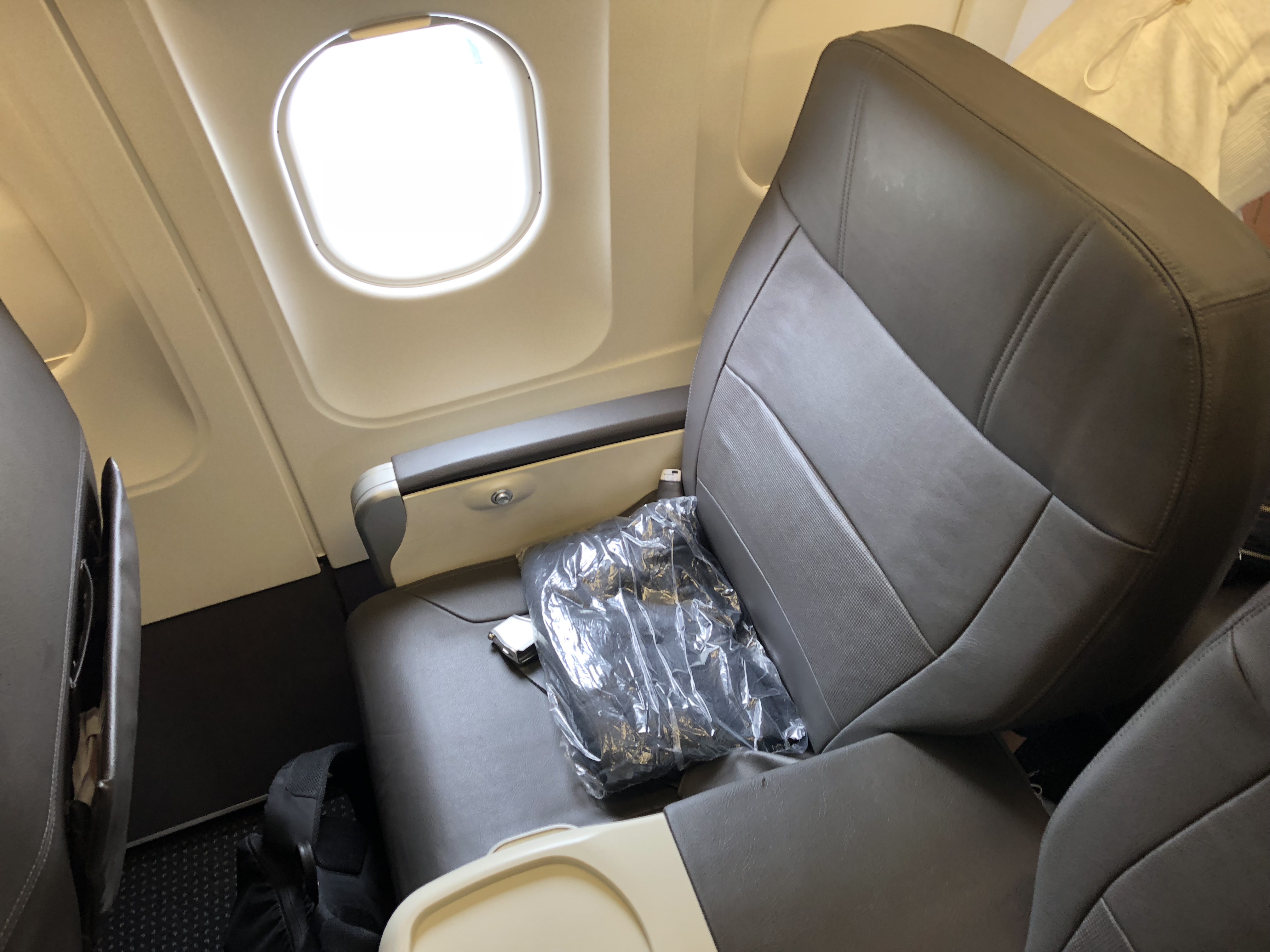
Luckily for me, I had fully charged my devices prior to the flight to Punta Cana. Having my devices fully charged, I was ready to put Gogo 2Ku wi-fi to the ultimate test.
Though American’s expanded library of in-flight entertainment (provided via the 2Ku wi-fi) is available from gate-to-gate, the actual data services and therefore the wi-fi, is not. The aircraft still has to hit 10,000 feet for the wi-fi to become active. On descent, once the aircraft goes below 10,000 feet, the service is no longer available.
I found this quite odd as other airlines with satellite-based wi-fi systems allow wi-fi to be available to passengers gate to gate. I’m not sure if this is something about Gogo’s service or American’s policies. Nonetheless, it was only a minor inconvenience.
Once the aircraft hit 10,000 feet, I quickly powered on my laptop and fired up my iPhone to get connected to the in-flight wi-fi. Everything on the passenger end is the exact same with regards to the user experience and interface. Passengers will still connect to “gogoinflight” and then login or connect as a guest.

I was originally concerned about pricing with the new Gogo 2Ku service. Some airlines have started to upcharge for satellite wi-fi services and I assumed American Airlines would do the same. I honestly expected a pass covering the entire flight to cost anywhere from $29 to $49. Luckily, I was wrong. Pricing remained the same.
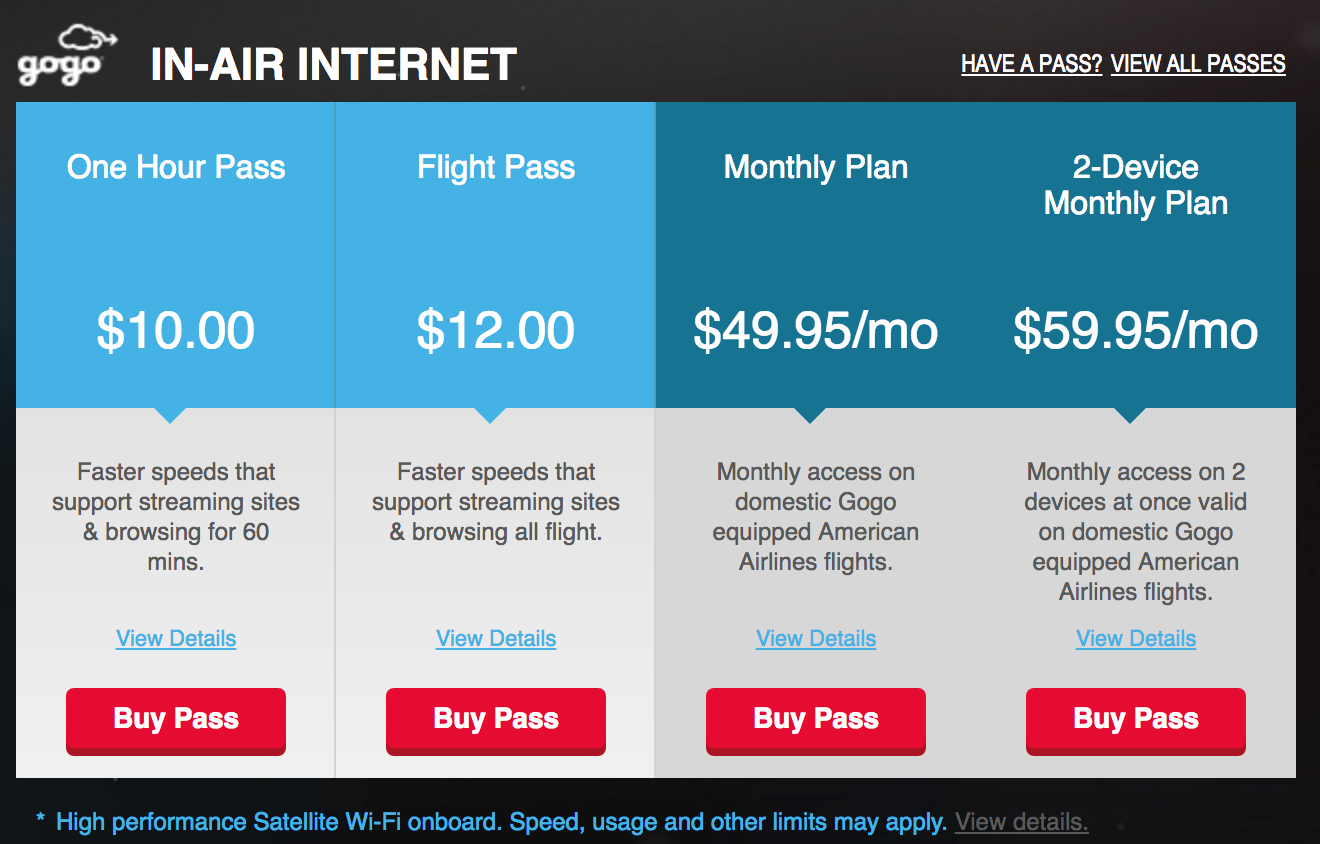
Once connected, I decided to get some work done. I checked and sent emails, communicated with followers on Twitter, streamed some music via Spotify, did some online shopping, booked my hotel in Punta Cana, and worked on blog posts. Though this is just a typical day in the life of the modern internet user, multi-tasking hasn’t been an option for those connected to the in-flight wi-fi in years past. Multi-tasking typically consumed too much bandwidth and was subject to the unreliable nature of ATG in-flight wi-fi. Gogo 2Ku was able to handle anything I threw its way throughout the flight even if I needed to do multiple things at once.
After finishing up what I needed to get done online, I decided to run a speed test. I managed to get a few tests in with each test remaining fairly consistent. I was truly blown away by just how fast these tests indicated Gogo 2Ku was throughout the flight. Typically, ATG has been able to provide passengers with speeds ranging from 1 Mbps to 3 Mbps at best. That’s assuming only a handful of passenger use the service. Gogo 2Ku managed to provide download speeds greater than 130 Mbps at times throughout the flight!
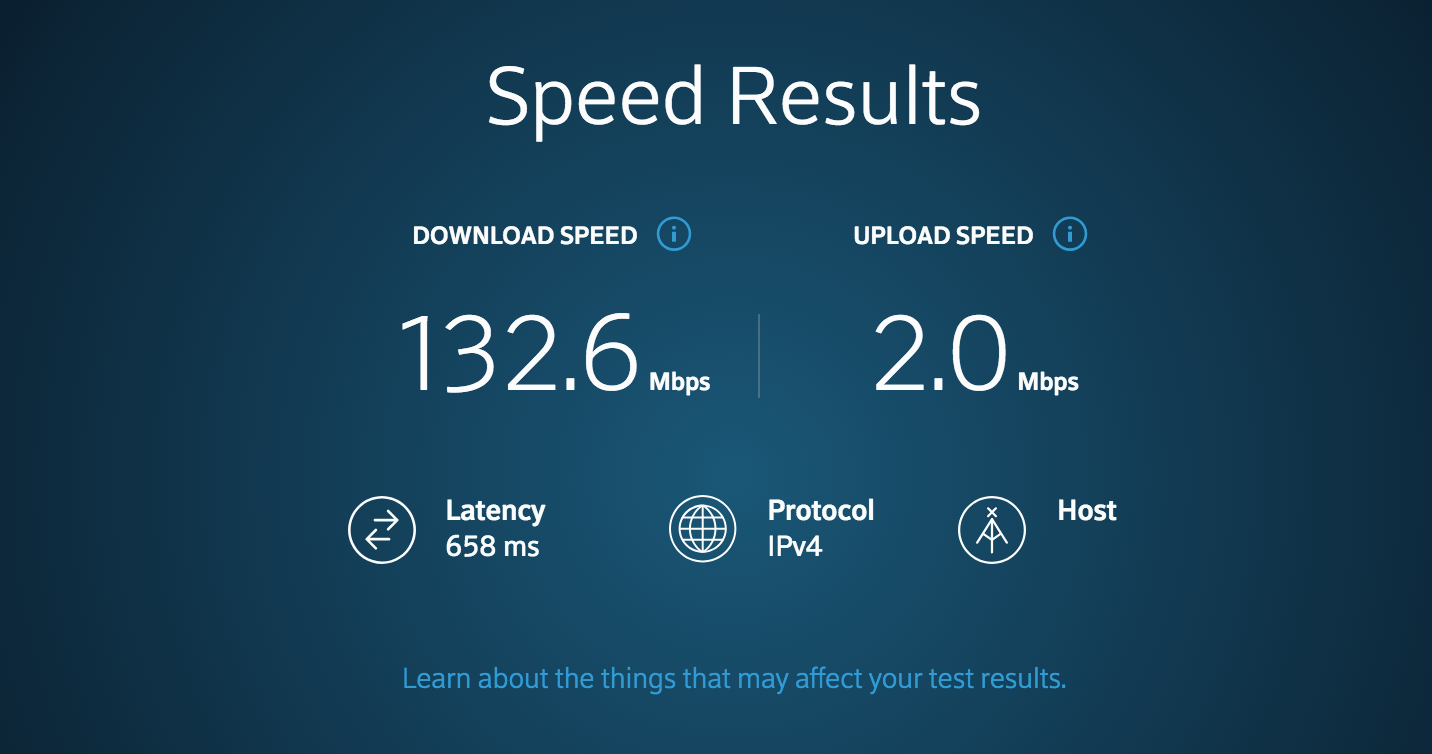
Some cities have fiber wi-fi available to consumers though it’s far from widely available. That said, most residential wi-fi services provide wi-fi packages with speeds ranging from 15 Mbps to 200 Mbps. At home, I currently have the highest residential speeds available in my area. On a good day, speeds approach 90 Mbps. The in-flight wi-fi was faster than what I have access to at home!
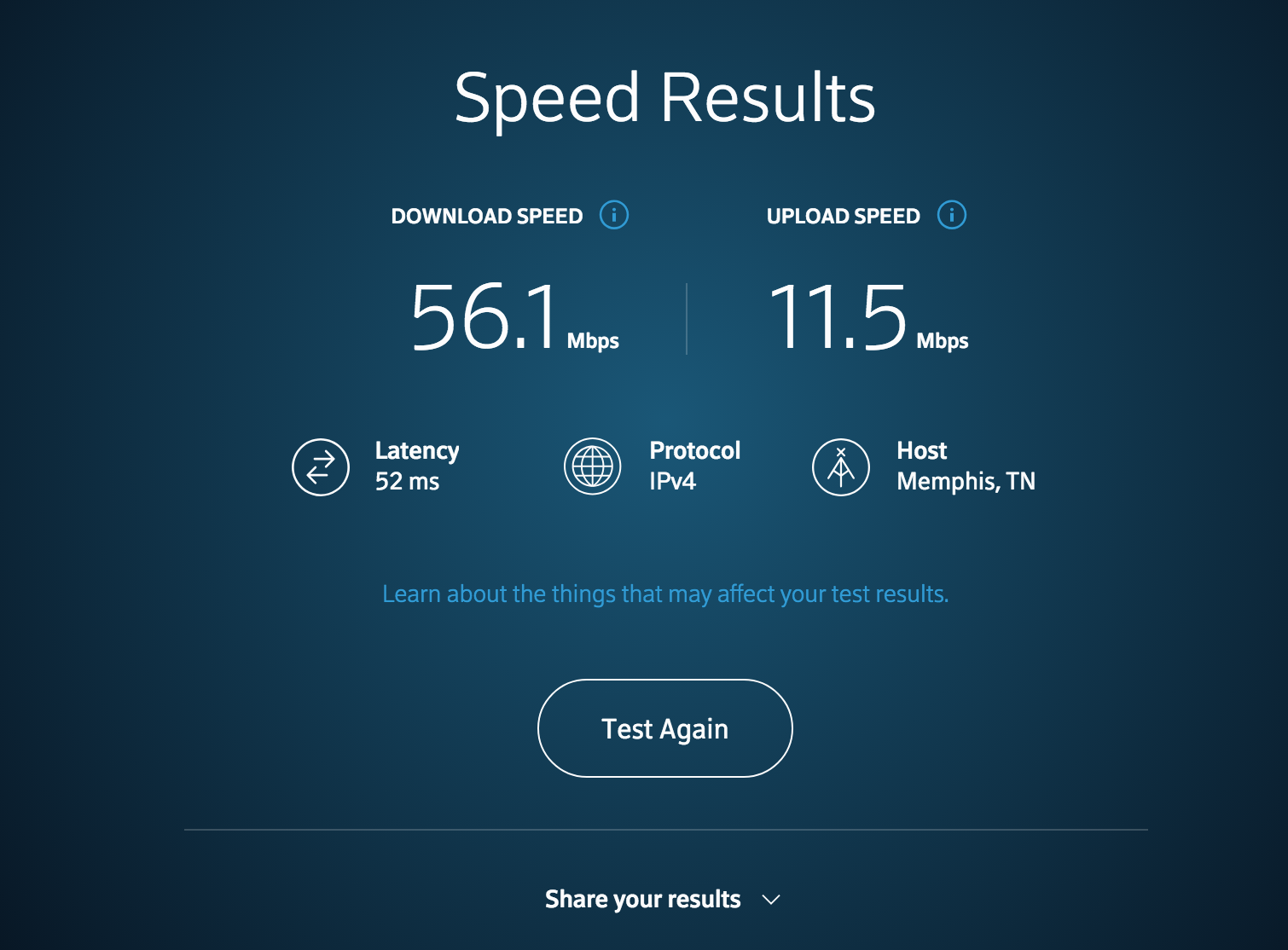
I wasn’t in the mood to watch anything on TV though I did decide to give the streaming capabilities a try. I went to YouTube and clicked on a video I had saved in a playlist. I ended up streaming Portugal. The Man’s performance at Bonnaroo last year.
I initially had my streaming settings set to auto. YouTube determined that the highest resolution at which the video could efficiently be streamed was 720p which is high-definition. I watched the video for a bit in 720p without any lag or buffering.

So, I decided to kick it up a notch to 1080p. At first, it took the video a few seconds to buffer and after 5 seconds, the video buffered for a few more seconds. However, for the remainder of my streaming video test, the video never buffered at 1080p–full HD. That’s extremely impressive.

For the remainder of the flight, I messed around on social media and brought up Flightradar24 to track the flight. Flightradar24 never buffered and social media was available any time the service was up and running. I ended up taking a nap and woke up as we descended below 10,000 feet. That meant that my time with Gogo 2Ku was over. Sadly, it was back to ole’ fashion ATG in-flight wi-fi on my flights back home.
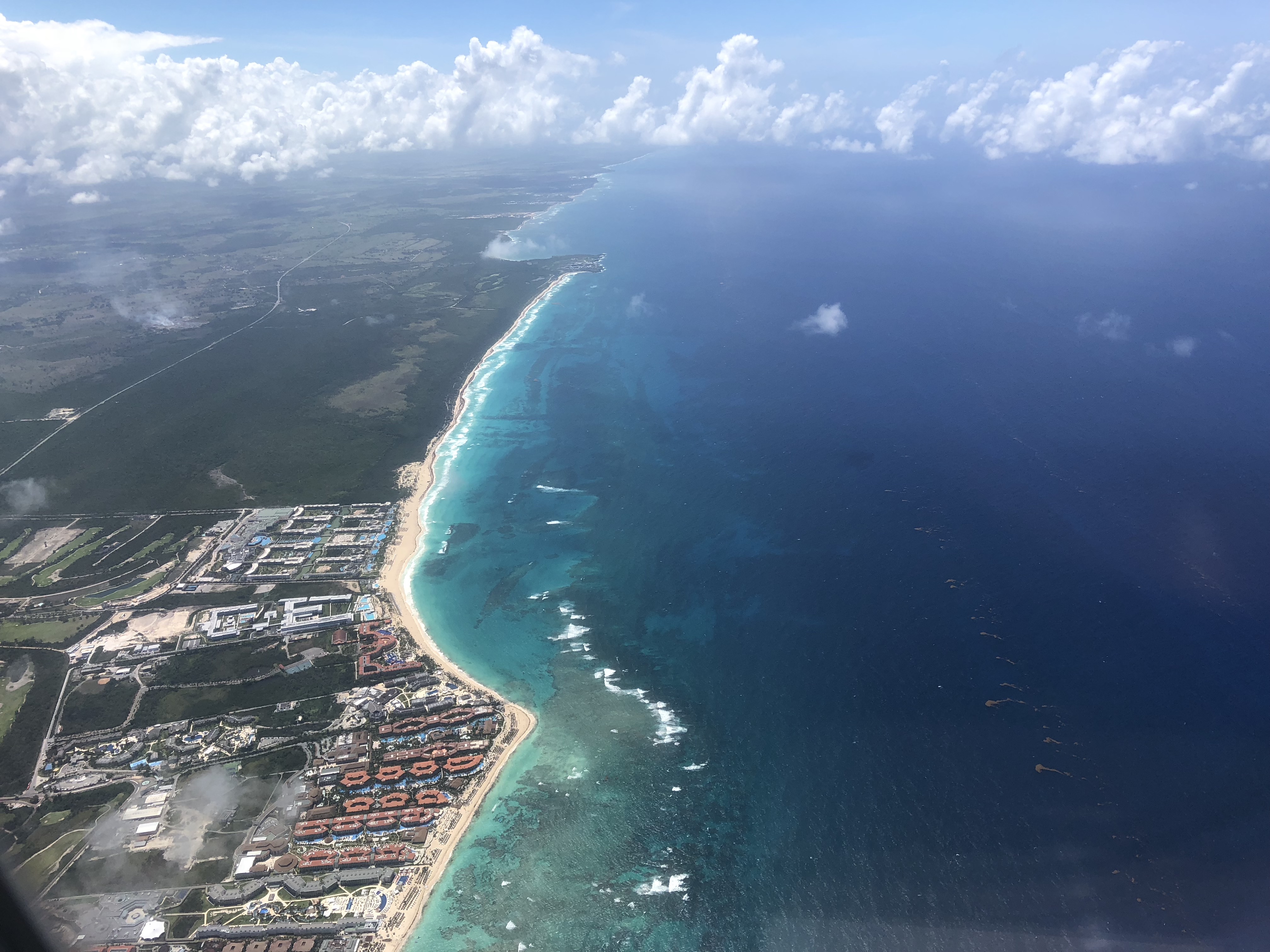
Overall – Trying Out Gogo 2Ku Wi-Fi On American Airlines
I was very impressed with just how well Gogo 2Ku performed on my flight. I had always expected an improvement over Gogo ATG and other ATG services but I could have never imagined an improvement to this degree. From multitasking to streaming a concert in full HD without interruption, if this is any indication of the future of in-flight wi-fi then we’re all in for a treat over these next few years.
Have you had the opportunity to try out Gogo 2Ku or other satellite-based wi-fi systems? Are you excited about the future of in-flight wi-fi?

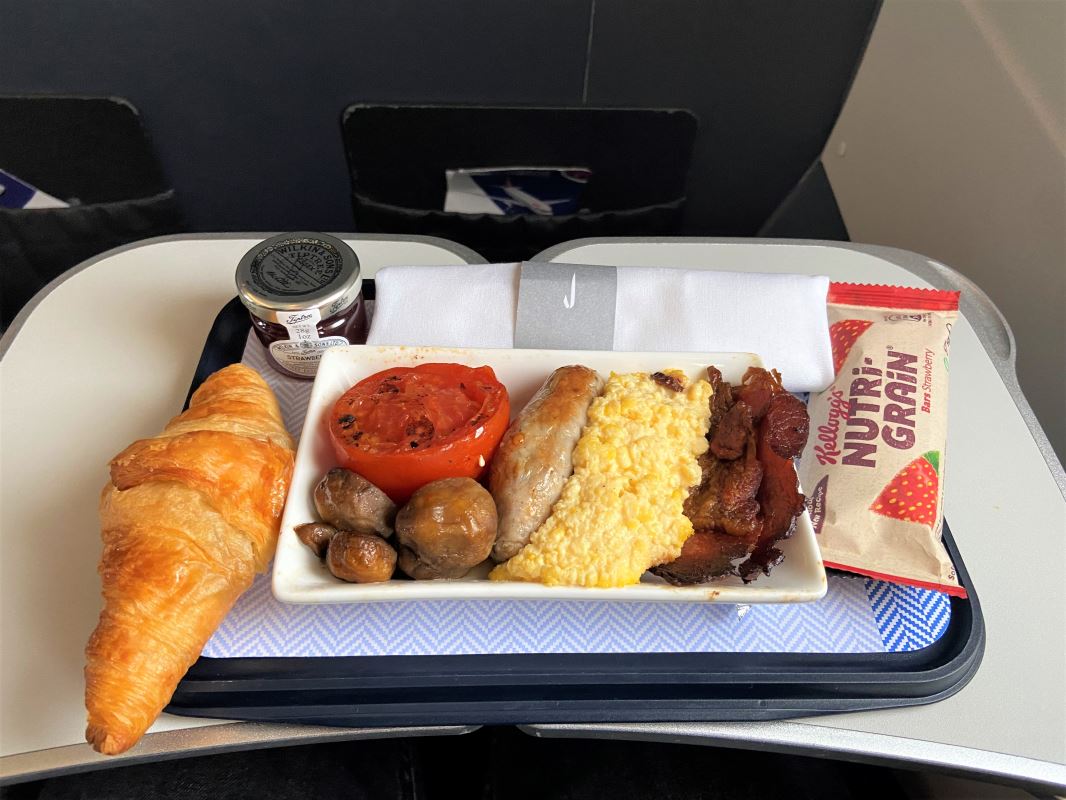


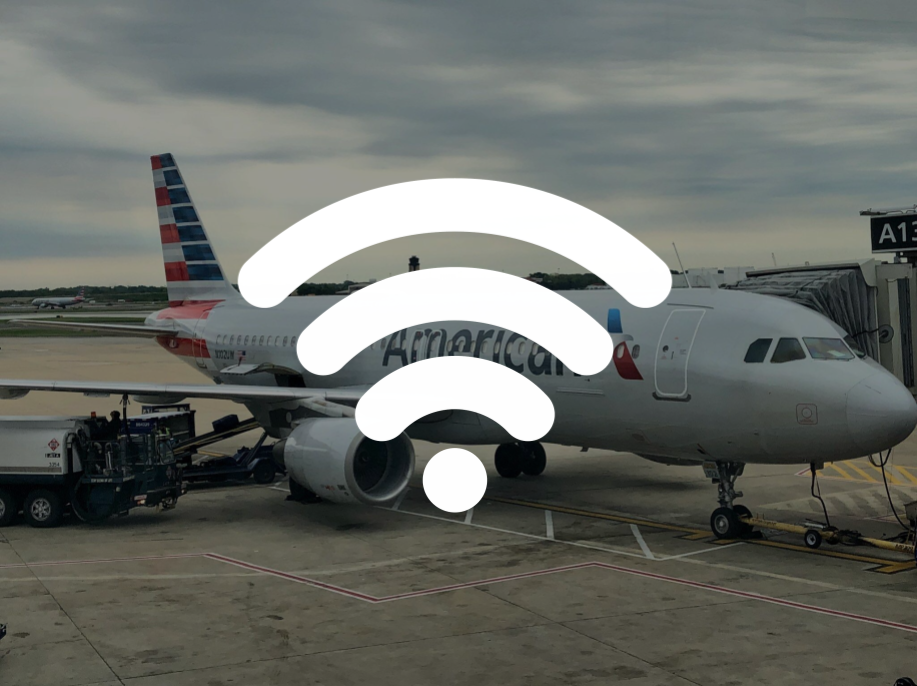




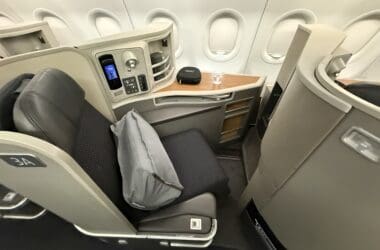
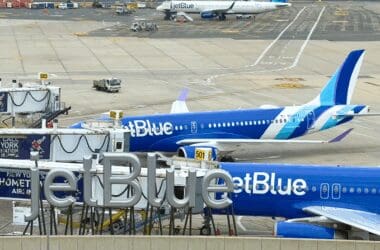
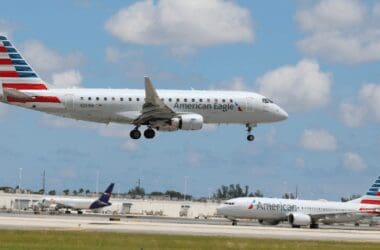

2 comments